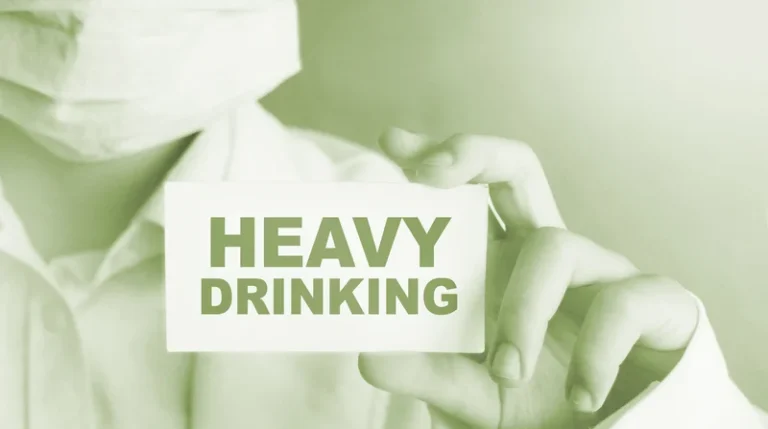
As of December 2022, the MAT Act has eliminated the DATA-Waiver (X-Waiver) program. Prescribers who were registered as DATA-Waiver prescribers will receive a new DEA registration certificate reflecting this change; no action is needed on the part of registrants. Diarrhea is another very uncomfortable and potentially dangerous withdrawal symptom. Loss of fluids and electrolytes from diarrhea can cause the heart to beat in an abnormal manner, which can lead to circulatory problems and even heart attack. Opioid withdrawal can cause symptoms, such as restlessness, excessive sweating, and digestive issues, among others.
The importance of preventing relapse
There are recent updates to the current management of opioid withdrawal syndrome. In May 2018, the FDA approved lofexidine hydrochloride, the first non-opioid for managing opioid withdrawal syndrome. Lofexidine hydrochloride is an alpha-2 adrenergic agonist indicated for the acute discontinuation of opioids. If you stop or decrease the number of opioids you’re taking, you may experience physical symptoms of withdrawal.
- Opioids attach to things called receptors on nerve cells in your brain, spinal cord, and other places to block pain messages that your body is sending to your brain.
- Procedure for administering clonidine for moderate/severe opioid withdrawal.
- Because the mainstay of treatment for stimulant withdrawal is symptomatic medication and supportive care, no withdrawal scale has been included.
- There are recent updates to the current management of opioid withdrawal syndrome.
Minimize Withdrawal Side Effects
In most cases, some form of methadone remains in the body for up to 3 days. When you’re experiencing extreme pain, however, you may need more relief than your body can provide. Without medication, these opioid receptors are there to bind with your body’s natural feel-good chemicals, known as endorphins.

Opiate and Opioid Withdrawal
- Even if the patient’s equivalent diazepam dose exceeds 40mg, do not give greater than 40mg diazepam daily during this stabilisation phase.
- Gradually tapering the dose under the supervision of a doctor improves outcomes and reduces the risk of experiencing serious withdrawal.
- These OWS can cause patients to relapse during early opioid discontinuation.
- Once you have tapered down, you might want to find something more convenient, like a therapist in private practice or at a local community health clinic.
- They are led by other people who have been dependent on addictive substances.
- We do not receive any commission or fee that is dependent upon which treatment provider a caller chooses.
- Opioid tolerance can also influence how quickly methadone will process out of the body and how often it will need to be taken during a taper.
This helps to relieve benzodiazepine withdrawal symptoms and prevent the development of seizures. Procedure for administering clonidine for moderate/severe opioid withdrawal. Patients should be monitored regularly (3-4 times daily) for symptoms and complications. The Short Opioid Withdrawal Scale (SOWS, p.37) is a useful tool for monitoring withdrawal. During withdrawal some patients may become disruptive and difficult to manage. The patient may be scared of being in the closed setting, or may not understand why they are in the closed setting.
Opioids are sometimes misused, as they can assist with mental relaxation and pain relief and can produce a sense of euphoria. Chronic opioid use can lead to the development of potentially incapacitating dependence. This activity describes the evaluation and management of opioid withdrawal and highlights the interprofessional team’s role in improving care for affected patients. If you’ve been taking methadone and you’re ready to start the process of getting off methadone, there are some important things to consider before considering how to detox off methadone.
- For example, if you were taking methadone for chronic pain, you may see a return of pain symptoms and withdrawal symptoms.
- However, when used for an extended period of time (e.g. several weeks), dependence can develop.
- Your doctor or the staff at an addiction treatment center will oversee your care to make sure you stop taking these drugs safely and prevent withdrawal symptoms.
- If you take a lower dose or try to stop taking the medication, you’ll likely experience withdrawal symptoms.
- Although methadone addiction is very rare, if a person does develop an addiction to it, withdrawal can be difficult.
Follow Mayo Clinic
For that reason, you must speak with your doctor about what to expect. Tolerance is something that occurs when a person takes an opioid drug regularly, and the brain requires larger doses for it to be effective. Drug tolerance can often lead to escalating dosage and then to drug dependence. Genetics can influence a person’s level of dependence, as personal or family history of addiction can be related to genes. In cases of misuse, methadone detox protocols are similar to that of other opioids.
- You can also look into group therapy sessions, which are often held at hospitals and other addiction treatment facilities.
- For instance, if withdrawal symptoms seem to get worse, the dosage may need to be increased slightly or the taper may need to be slowed down.
- Withdrawal symptoms are unpleasant, but they will eventually stop.
- Symptoms that are not satisfactorily reduced by codeine phosphate can be managed with symptomatic treatment as required (see Table 3).
- Due to the risk of methadone misuse and overdose, methadone therapy is only available to people who are enrolled in a government-approved treatment program.
Long-Term Treatment for Opioid Addiction

So, dose reductions can occur once a week, once every two weeks, or less often. They can be highly frustrating for both people in recovery and their loved ones. It helps to remember that these symptoms are temporary and should resolve within the year. You may either have to resupply the substance or let your body methadone withdrawal go through the withdrawal process while it creates a natural state of balance again. Your body will let you know by generating a number of uncomfortable, often severe symptoms. Used for thousands of years as a form of pain relief, opium eventually gave rise to commercial medications, like morphine and fentanyl.
Opioid and Opiate Withdrawal
Table 3 provides guidance on medications for alleviating common withdrawal symptoms. All of these things should be considered when starting a methadone taper. The goal is to start with the lowest dosage possible that will minimize drug cravings and withdrawal symptoms. Although there is no diagnostic test for opioid withdrawal, urine toxicology must be checked to rule out withdrawal from any other drugs or combination of drugs. Urine toxicology is positive for most opioids such as morphine, heroin, codeine, oxycodone, and propoxyphene) for 12 to 36 hours after use.

Opioid withdrawal can cause pregnancy complications, including fetal stress and even fetal death. Opioids affect the way your brain works, flooding it with neurotransmitters. After you detox, your brain is operating with depleted stores of neurotransmitters. In homeostasis, hormones, neurotransmitters, and processes in your body are all working together to keep a state of balance.
Physical Side Effects
If you encounter severe withdrawal symptoms, you may need to speak to a doctor right away. Opioid drugs interact with brain chemistry, elevating levels of dopamine and suppressing functions of the central nervous system by binding to opioid receptors in the brain. In doing so, methadone and other opioid drugs can cause a kind of artificial imbalance in the chemical makeup of the brain. When methadone processes out, the brain can be slow to regulate itself since it is accustomed to relying on the interaction of the drug. Withdrawal can cause emotional distress and physical discomfort, which is compared to a really bad case of the flu.


